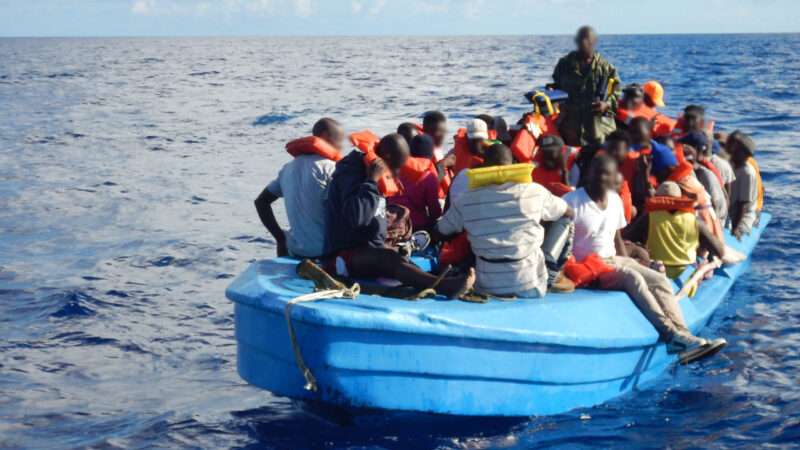
More than 600 Haitians have reached the U.S. mainland in the last eight months after sailing across the treacherous Caribbean pass; many others have died trying to make the journey. This is, the Miami Herald reports, "the largest exodus of boat refugees since 2004." It is also what happens when a group of people wants to flee dire circumstances but lacks a safe and predictable immigration path.
Political and economic conditions in Haiti have long been terrible, but they worsened last year after a devastating earthquake and the assassination of President Jovenel Moïse. Violence in Haiti, poor conditions in Latin American countries where other Haitians had settled, and additional factors compelled thousands of Haitians to journey to the United States. That mass migration came to a head in September, when around 15,000 Haitians gathered at the U.S.–Mexico border, some of them clashing with U.S. Customs and Border Patrol (CBP) agents as they tried to reach American soil.
In 2020, President Donald Trump invoked Title 42 of the Public Health Service Act to enact a policy of allowing immediate expulsions of migrants at the border, a policy that remains in place today. Many migrants, thus barred from beginning the formal asylum-seeking process, were simply sent back to Haiti. The Biden administration has expelled more than 25,000 Haitians since September. Around 4,000 were sent back to Haiti last month.
With land-based migration proving difficult, some desperate Haitians are attempting to reach American soil aboard overcrowded ships. The Miami Herald reports that five boats of undocumented Haitian migrants have reached the Florida Keys since November. While others reach Puerto Rico, most are intercepted in the water—and many drown, undetected. A boat trying to reach the U.S. in May capsized, resulting in the deaths of 11 Haitian women. Another vessel carrying two dozen Haitians bound for the U.S. has been missing since March.
Border hardliners often claim that chaos will erupt if Title 42 expulsions are halted and the standard asylum process resumes. But as the Cato Institute's David J. Bier points out, illegal immigration from Haiti (and other Caribbean nations) is a policy choice. "In October 2016, nearly 7,500 asylum seekers from Haiti and Cuba crossed the U.S.-Mexico border into the United States," Bier writes. "Just 6 did so illegally….99.9 percent of all crossings from these two countries happened legally through lawful ports of entry." That number had essentially reversed by October 2021, when 99.7 percent of the 7,000 Haitians and Cubans who crossed the border did so illegally.
In the early 2010s, border guards "at southwest ports of entry adopted a policy of generally granting parole to Haitian asylum seekers," Bier points out, after the Obama administration suspended removals of Haitians without criminal records. They were legally permitted to enter the country, claim asylum, and receive work authorization. But starting in 2016, the Department of Homeland Security required the CBP to detain all incoming Haitians and turn them over to Immigration and Customs Enforcement to be deported (unless they could demonstrate a credible fear of persecution in their home country). A significant proportion of Haitians began to enter the U.S. illegally after this policy change and other Trump-era restrictions on asylum.
Immigration officials warn that sea arrivals could come to resemble migration patterns in the 1980s and 1990s, when groups of 70 to 100 Haitians would heap into one makeshift boat bound for the United States. "Our general worry is this could replicate over the summer and this could become a trend," CBP spokesperson Jeffrey Quiñones told The Washington Post.
Restoring asylum is an important step in preventing more tragedies, and so is employment-based immigration. Thankfully, the Biden administration has said it will provide 11,500 H-2B nonagricultural seasonal worker visas for people from northern Central America and Haiti. Shutting down safe and legal migration options won't prevent truly desperate Haitians from attempting to escape danger, but reopening them can help prevent deadly journeys.
The post America's Harsh Immigration Restrictions Mean Haitians Drown Trying To Get Here appeared first on Reason.com.







